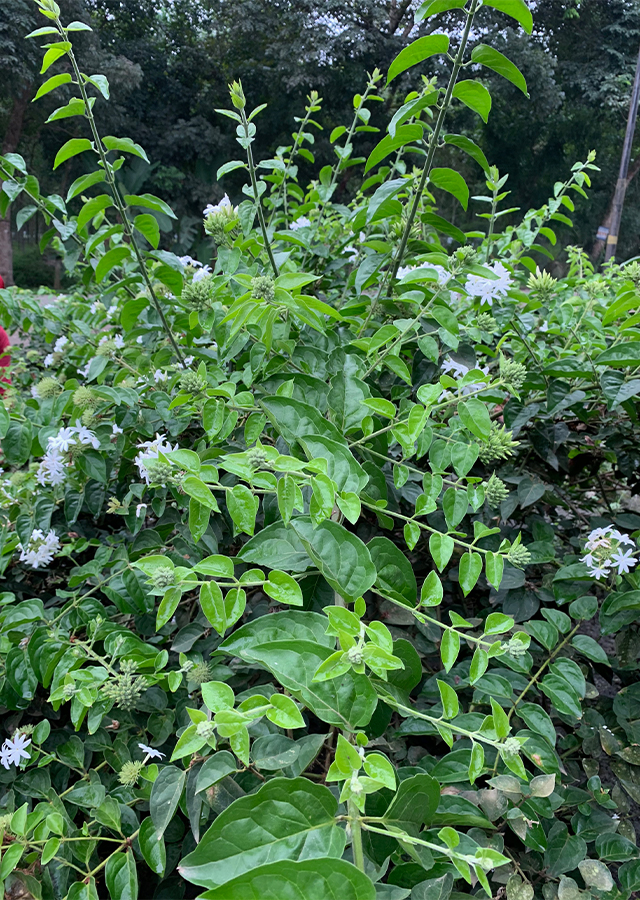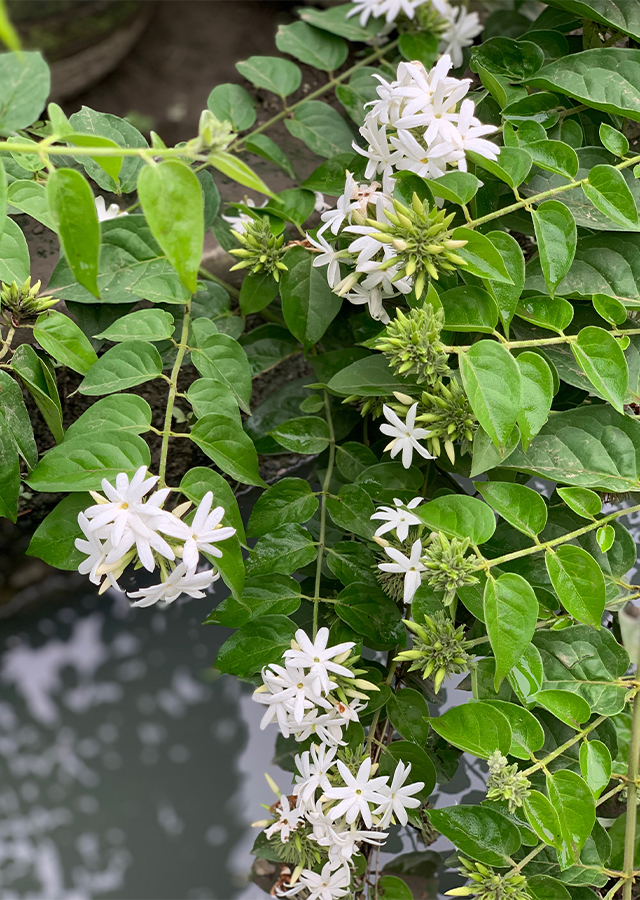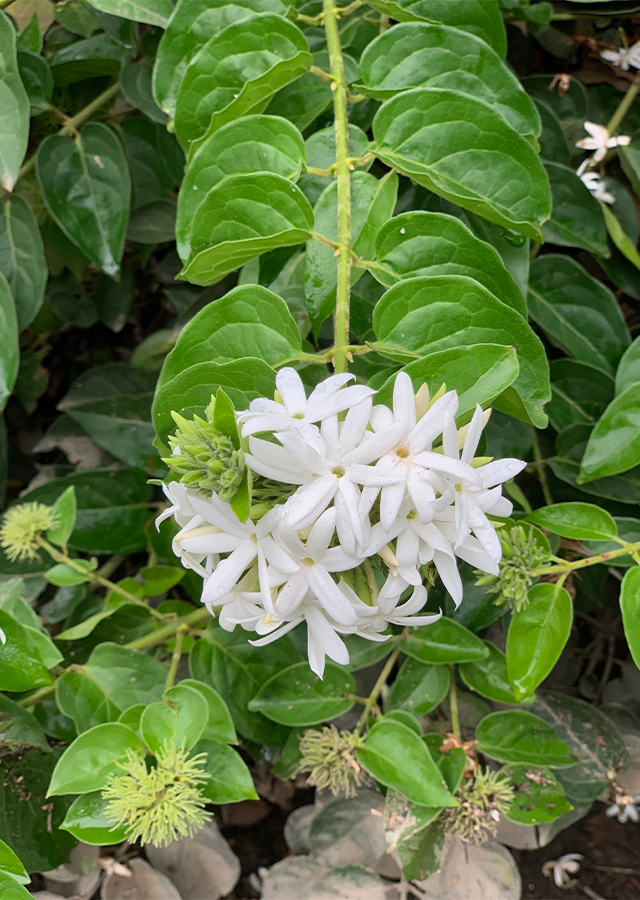Star jasmine
Jasminum multiflorum (Burm.f.) Andrews
Oleaceae
Location in our garden
Principal



Synonym
Jasminum gracillimum Hook.f.
Jasminum multiflorum var. nicobaricum Thoth.
Jasminum pubescens (Retz.) Willd.
Habitus
Shrubs. Evergreen scrambling shrub or weak climber that can reach a height of 6 meters.
Part Used
Leaves
Bark
Flowers
Roots
Growing Requirements
Full Sunshine
Habitat
Riverbanks
Forest
Shrublands
Overview
Star jasmine is native to the Indian subcontinent, West Himalaya, and Southeast Asia (India, Laos, Myanmar, Thailand, Vietnam). It has been introduced outside its native range mainly due to cultivation as an ornamental shrub, being now present in many tropical and subtropical countries. It is reported as invasive in Puerto Rico.
Vernacular Names
Malulee (Thailand), Sampagita de china (Philippines), Lài dúng (Vietnamese), Pichcha (Srilanka), Mao mo li (Chinese), Attahasaka (India), Jazmín de estrella (Spanish).
Agroecology
Grows in forests of elevations up to 1,200 m. When naturalized, it is often found in open, disturbed sites of forests and scrubs, pastures, abandoned gardens, wastelands, vacant lots, and roadsides. It thrives in a sunny location. Members of this genus thrive in full sun or partial shade, with a fertile, humus-rich, damp but well-drained soil as a preference. Plants can blossom for nearly the entire year.
Morphology
- Stem - bushy, spreading and slender, tomentose.
- Leaves - opposite, simple, petioles 6-12 mm long, tomentose; blades ovate, the apex acute to acuminate, the base subtruncate to cordiform, the margins entire, upper surface puberulous, lower surface tomentose, especially on the veins, 4-7 cm × 1.5-4 cm.
- Flowers - white drying brownish, clustered in terminal umbellate cymes on side shoots, sessile, unscented to slightly fragrant; bracts foliaceous, pubescent; calyx, infundibuliform, ovary superior, 4-lobate, style slender, included, stigma bilobed.
- Fruits - a globose berry, c. 1.0 cm long, black when ripe, 2-seeded.
Cultivation
- By seeds.
- By soft-wood cuttings under mist.
- By cuttings of half-ripe wood under mist.
Chemical Constituents
Alkaloids, coumarin, flavonoids, tannins, terpenoids, glycosides, emodin, leucoanthcyanin, steroids, anthicyanin, phlobatin, saponins, nerolidol, benzyl benzoate, jasmolactone, hexenyl benzoate, ß-farnesene, α-cadinol, acetoxyphenylethanol, and n-tritetracontane.
Traditional Medicinal Uses
- The oils have many pharmacological properties including being a relaxant, antidepressant, analgesic, antioxidant, antimicrobial, cardioprotective, nematicide and lactifuge.
- The roots are used as an emetic, emmenagogue, and as an antidote for snake bites.
- The flowers have been used to suppress milk production in women.
- The bark boiled in water is used to treat burns.
- A poultice of the dried leaves, soaked in water, is used to treat indolent ulcers.
- The pounded leaves mixed with water are used as a remedy for stomach disorders. The leaves are also used as a poultice for difficult ulcers or in the form of paste to treat headaches, rheumatic pain, skin sores, allergy, itches, and inflammation.
- In Indonesia, plant infusion is used to treat catarrh of the bladder; also used as a febrifuge.
Part Used
Reference Sources
- Tropical Plants Database, Ken Fern. tropical.theferns.info. Jasminum multiflorum. 2021-11-30.
- Plant of The World Online. 2021. Jasminum multiflorum. https://powo.science.kew.org/taxon/urn:lsid:ipni.org:names:609641-1
- Invasive Species Compendium. 2016. Jasminum multiflorum. https://www.cabi.org/isc/datasheet/115016#tosummaryOfInvasiveness
- Rahajoe, J.S., Kiew, R. & van Valkenburg, J.L.C.H., 1999. Jasminum L.. In: de Padua, L.S., Bunyapraphatsara, N. and Lemmens, R.H.M.J. (Editors): Plant Resources of South-East Asia No 12(1): Medicinal and poisonous plants 1. PROSEA Foundation, Bogor,


